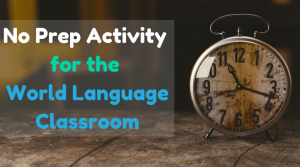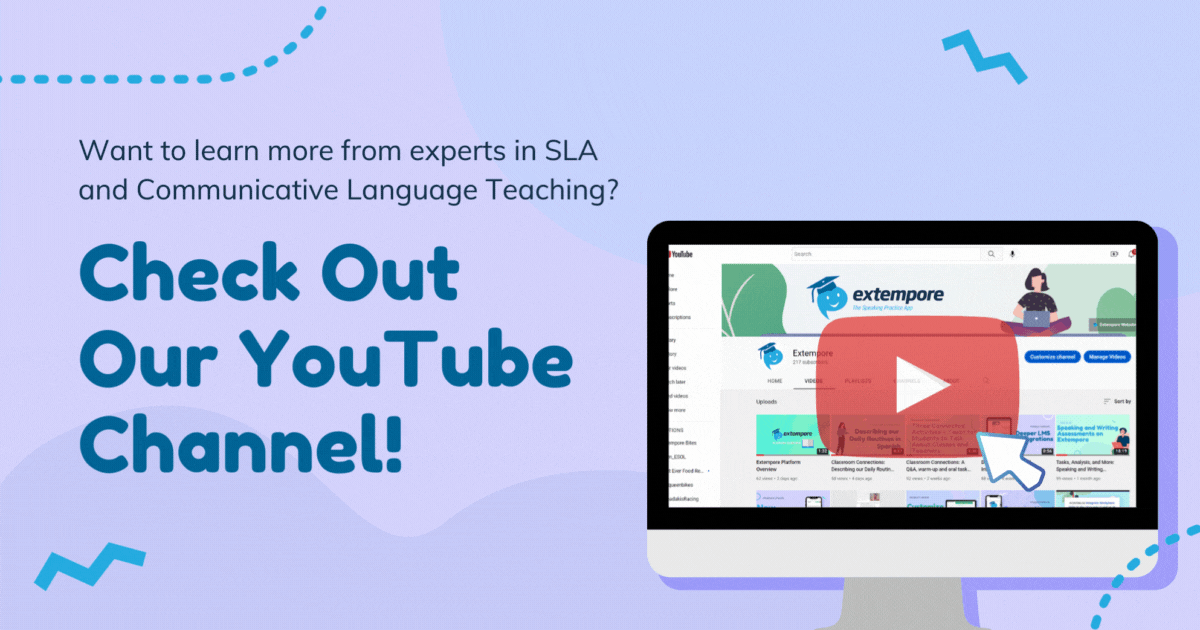
One Activity: All-in-one and done?
Could there be such a thing? Sometimes being a world language teacher is overwhelming. We do it all...speaking, listening, writing and reading. These are all essential elements of an effective classroom making it all-in-one!
In addition to all of these moving parts, we want our students to connect with the material. Let’s face it, we know they like talking about themselves, sharing their opinions and points of view. You don’t need to look further than any social media platform!

Here is an activity that is both interpersonal and intrapersonal. It can last five minutes or a whole class period. It’s up to you! There is absolutely NO prep involved. Is it too good to be true?
Here are the steps:
- Simply write “YES” and “NO” in the target language on the board on opposite ends of the room. If you don’t have boards, write it in big letters on a piece of paper and tape them to the wall. If you plan to do this activity again, make signs on poster board in bold letters and laminate!
- Explain (in the target language, if possible) that the middle of the room is the “Maybe” or neutral zone. Again, the sign should be in the target language.
- Keeping in mind your current unit/theme, start asking basic questions, or make statements in the target language. These questions and/or statements may be of personal nature, an opinion, True/False… a statement of fact… you get the idea!
- Students move to the side of the room that best reflects their opinion or answer. They should be silent during this activity; any comments should be in the target language.
- After each student has moved to a side or the middle of the room, repeat the question/statement and follow up with a few students, asking for more specific details.
For example, on a Monday, You could ask students about where they went/what they did on the weekend. I would say: “I went to the mall.” The students would then walk to one side or the other side of the room. For those standing on the “Yes” side, I would follow up with 4 or 5 individual students. “When did you go?” “With whom?” “What did you buy?” Thus, practicing the “You” form of the verb. I would then ask one student what someone else said in order to practice the he/she form of the verb: “What did Joe buy?” “Did Joe go with his friends or his brother?”
Likewise, I can ask a few students who didn’t go to the mall where they went instead. I find that by the end of the activity I connect with each student at least once. I always mix the activity with Yes/No questions, True/False statements, and statements. It keeps students on their toes!
The conclusion of the activity
Students have practiced listening and speaking skills simultaneously. They have also had a chance to move around the classroom- it truly is an all-in one activity! It can last as long as the students can sustain it-- for me it has lasted as long as 20 minutes. It really depends on the class as a whole, prior knowledge, and current level of Spanish. Young elementary students may only be able to participate in this activity for 5 minutes, just practicing eye color. Older grades and young adults can handle a variety of vocabulary and grammatical structures. This also works at the college level.
If you are working with a certain grammar topic, you can make signs that meet your needs: I have/I don’t have, I am/I am not. I have signs with all three phrases on it, allowing for more variety. The possibilities are endless!
For novice learners, it can be “I have ________color hair/eyes.” or, “I have ____ class third hour.” For AP/IB high school, college or any other higher level class, I have modified the questions/statements to make them more thought-provoking. For example, for the technology unit, I make statements like, “Use of technology should be limited for infants under five years of age.” or for the social issues unit, “It is necessary that the government provide healthcare.” In this case, students can choose sides and then a follow-up assignment could be to write a position paper or essay. I always try to stick to topics that are not too controversial or heated.
After we have cycled through the questions, answers and opinions, students feel more comfortable with the topic and themes. If students are struggling, I ask them to contribute after another student models a successful response.
Extempore as a follow-up or closing activity
Students are comfortable and familiar enough with the topic, however there is still an allowance for spontaneous speaking. I ask many questions that were asked in class, or I modify them to challenge students to extend their thinking. Most of the time, I try to post questions before class, however I may need to tailor them before assigning. If this is the case, I have students answer some questions and/or do a reflection on paper to give me a few moments.
Using the example above, you could have students answer:
- Where did you go this weekend?
- What did you do?
- Who did you see/go with?
- Give an opinion: It was fun, boring, interesting…
If you don’t have time for Extempore in class, assign it as homework. This could be in conjunction with a writing assignment which could be an exit ticket, an in-class writing activity or completed at home.
That’s it. You have a lesson plan that’s ready to go. It’s adaptable, flexible, and accessible to a variety of learning styles. Have a great year!

This post is courtesy of Andrea Nazelli who is the Spanish department chair and teacher at Detroit Country Day School. See her post Keeping Students in the Target Language [Three Classroom Activities] for more activity ideas!


